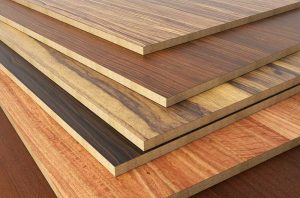Wood is a fundamental element that adds beauty and elegance to interior spaces, making it a popular choice for household furniture such as tables, chairs, cabinets, beds, flooring, and doors. While natural wood offers a unique and attractive touch that suits both traditional and contemporary tastes, synthetic wood provides a flexible and economical alternative that meets the demands of modern life. So, what are the differences between natural and synthetic wood, and which does “Wooden House” use in its furniture manufacturing?
Natural Wood: Types and Advantages

Natural wood, sourced primarily from trees, is the most commonly used type worldwide. It is processed and manufactured naturally without the addition of any chemicals or synthetic materials. Additionally, natural wood is recyclable, making it an environmentally sustainable choice.
Natural wood includes various types, each with its specific uses:
- Teak Wood: Used in decor and furniture making.
- Javanese Wood: Used for making wooden windows and doors.
- Beech Wood: Used in cabinet and kitchen construction.
- Mahogany Wood: Used for making tables and chairs.
- Oak Wood: Used in flooring, furniture, firewood, garden fence posts, and barrels.
- Maple Wood: Used in parquet flooring.
- Russian Wood: Used in bedrooms and bed making.
- Swedish Wood: Used in door and window manufacturing.
- American Wood: Used in door and kitchen making.
- Pine Wood: Used in furniture and home decor like doors and sofas.
- Latte Wood: Used in office supplies manufacturing.
Natural wood’s advantages include greater strength, durability, and stability compared to Synthetic Wood. Its strength is due to its density, which allows it to withstand environmental pressures and impacts better. Its durability is reflected in its ability to bear loads and pressure, making it ideal for buildings and furniture. Additionally, natural wood provides better thermal and sound insulation. It adapts and responds to changes in humidity and temperature, absorbing and releasing moisture naturally, which helps maintain its stability and prevents significant shrinking or expansion.

Synthetic Wood: An Economical Alternative
Like its natural counterpart, synthetic wood is used in construction and manufacturing. It is made from a combination of natural and Synthetic materials. Produced in various ways, it consists of multiple layers of compressed wood fibres, primarily felt wood, bonded with glue and other binding materials to form sturdy wooden sheets.
There are four main types of synthetic wood:
- Plywood: Also known as plywood, it is highly cohesive and water-resistant.
- Fiberboard (MDF): Notable for its smooth surface, which is paintable, unlike other wood types.
- Blockboard: Characterized by its lightweight, strength, and resistance to bending and shrinking.
- Hardboard: Known for its strength and superior quality in decor despite its thinness.
The primary advantage of synthetic wood is its lower cost than natural wood, making it an attractive option for those seeking economical solutions. It is also more flexible and can be manufactured in various sizes and shapes due to its easy cutting and shaping. Additionally, synthetic wood is insect-resistant, can be cleaned with water and soap, and is free from cracks and splits. However, it is generally less durable than natural wood and more susceptible to moisture and temperature changes.
Wooden House: Diversity and High Quality
 Although we pride ourselves on our use of natural wood, our continuous effort to satisfy all customers leads us to fulfil their preference for synthetic wood. Therefore, we use both types of wood according to the client’s request, but we guarantee you quality in either case, ensuring you receive a product that meets your standards regardless of your choice.
Although we pride ourselves on our use of natural wood, our continuous effort to satisfy all customers leads us to fulfil their preference for synthetic wood. Therefore, we use both types of wood according to the client’s request, but we guarantee you quality in either case, ensuring you receive a product that meets your standards regardless of your choice.
